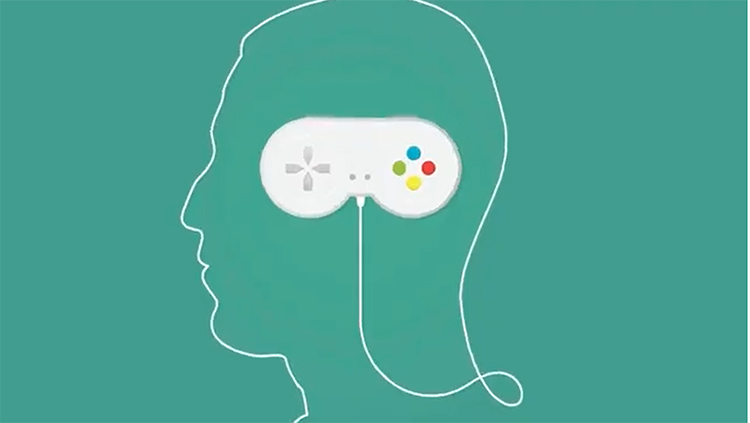Do you know about the rumor that claims video games are being used by the authorities to hypnotize children?
It seems that there could be some validity to that after all. Games can hypnotize people, not because the authorities are attempting to use them to govern us.

What does hypnosis feel like?
The sensation of being hypnotized varies from person to person. Nevertheless, a number of similar sensations are shared by many individuals, including isolation from external events, a sense of oneness with the cosmos, a diminished sense of self, darkness, a changed perception of time, and the loss of body movements and thinking.
You’d be correct to assume that this has a lot in common with meditation. The main distinction is that meditation causes muscles to become more relaxed. Meditation has the same effects on a person. I suppose there are several paths to inner tranquility.
Many of us may have had the sensation of being in a hypnotic or trance-like condition, especially if we’ve engaged in activities that call for a great deal of repetition and sustained focus.
Hypnosis-What is that?
Yes, that’s right. A trance-like condition may result from engaging in an activity that calls for repeated physical movement.
Congratulations if you’ve ever returned home only to discover that you actually can’t recall how you got there! You were put under hypnosis!
In reality, hypnotic traditions and dance performances have existed for a very long time. In the Turkish Whirling Dervish, for instance, there is only one motion in this dance: whirling around in place.
Individuals who engage in this dance describe emotions of oneness with the cosmos, losing their sense of individuality, being cut off from external events, and losing their ability to think and move spontaneously. Sounds familiar?
Getting Hypnotized
Playing games that demand the same motions repeatedly can also cause repetitive movements that result in hypnosis. Take the 2048 game, as an example.
The 2048 algorithm calls for exactly four swipes—up, down, left, and right.
While no two games are alike, consistent play can induce a meditative state similar to the coiled spring or highway trance.
Children who play games aren’t the only ones who find online engagement and entertainment captivating. Your smartphone’s flashing lights put your brain into a state similar to a TV. This can entirely capture your attention when coupled with your irrational desire to engage in conversation.
It’s likely that you have observed a couple dining together who are both absorbed in their phones, messaging, and playing games instead of looking into each other’s eyes. Or perhaps you did this yourself. Someone is trance-like in any scenario!
Playing Music
Plug in your headphones and turn up your favorite music to see what transpires. It is obvious that this is another approach to achieving Theta wave dominance and, yes, a state of hypnosis if you enjoy listening to classical music or getting down to real “trance music.”
Sound stimulates your brain, which enjoys it and allows you to lose yourself in it. If you ever find yourself completely disconnected from the world around you, be careful. It’s time to awaken from your trance when you’re ready to leap into the crosswalk.
Entering the Flow State
You are in a trance whenever you are in the flow, whether you are contemplating, creating art, blogging, or going for a jog. Your cognitive consciousness pauses, letting you feel at peace while operating on “auto mode.”
You effortlessly block out any and all interruptions since you feel completely absorbed in the work at hand. When you’re “in a trance,” it may be quite difficult for your friends and family to divert your attention.
Ever been distracted by a game and missed your bus stop? Have you ever been composing a text when you suddenly realized you have no clue how you got here anyway? You could have been hypnotized, then.
Hypnotic Indications
Numerous phenomena can occur while someone is hypnotized. The overview that follows describes the visible symptoms that a person typically displays when under hypnosis. Not everyone who is hypnotized experiences all of these, so if any of these is missing, one shouldn’t rule out the presence of hypnosis. A skilled hypnotherapist may be able to spot many of the subtle hypnosis symptoms that a person in hypnosis or an observer could completely miss.
Body: The person tries to feel at ease as their body relaxes. A hypnotized person loses their bodily tension. The facial expression is frequently where the muscles are most easily seen to relax. The face of a person under hypnosis is smooth and smoothed out, and their eyes typically have a blank appearance.
Trance does not need complete stillness, although hypnotized individuals do not exhibit restless behaviors like shaking their hands or shaking their feet, for example. Even those who typically have quirks or jerks rarely do so while under hypnosis. When a trance-affected individual moves, their actions will be deliberate and sluggish. A warm body temperature is usually a sign of hypnosis.
Eyes: Blinking becomes more slowly as a person enters a trance. The first stage of trance is characterized by the flickering of the eyelids. This is one clear indication of hypnosis. On occasion, just the whites of the eyes are seen due to the eyeballs rolling upward.
There will be increased watering in the eyes. The eyes frequently turn red while under hypnosis. A person in hypnosis frequently complains of visual misting or blurring, even if it is not visible to others. Tunnel vision, as well as modifications to an object’s colors, sizes, and forms, can all result from hypnosis.
Attention: A hypnotized individual will be less easily distracted by noises outside. To the point of severe inattention, the patient can stop making an attempt to pay attention to the hypnotherapist.
Respiration and heart rate: Pulse rate and breathing rate drop down. However, a person undergoing hypnosis may feel a short rise in pulse and respiration as a result of realizing they are in hypnosis.Swallowing: During trance, the swallowing reflex slows or stops entirely.

